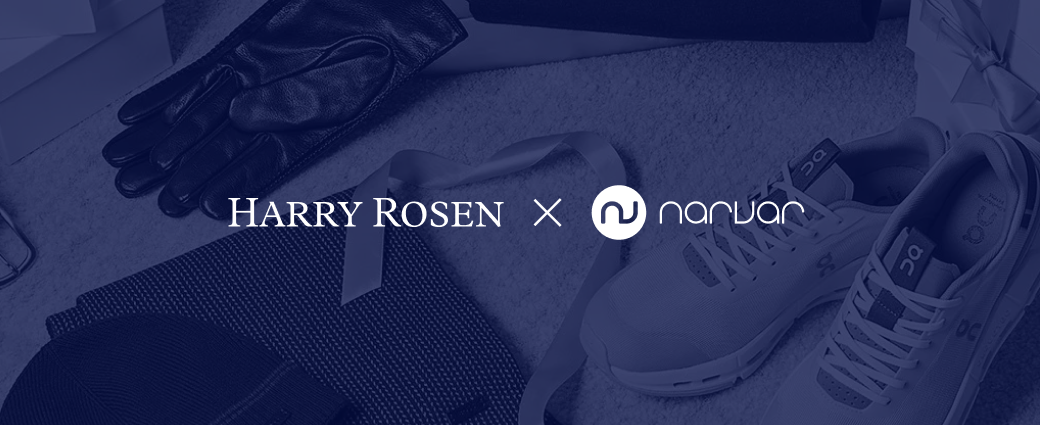
AI-powered delivery date estimates to boost conversion
Give shoppers peace of mind and protect and grow your bottom line
Personalized tracking experiences to build brand loyalty
Returns and exchanges management to mitigate fraud and reward best customers
Proactive communication to drive customer lifetime value
Delivery claim management to tackle fraud and build trust
Easy Returns Promote Customer Loyalty—Just Ask These Guys

Customers want enjoyable shopping experiences. In the world of brick and mortar, that means a beautiful store and helpful staffers, and online, it translates to an intuitive website, fast and cheap (or free) shipping, and attractive packaging.
For the retail industry, the business focus—particularly from an acquisition perspective—has always been on making the sale. But an easy returns experience is equally important when it comes to building loyalty.
As we’ve already discussed, returns are the new normal. 40% of shoppers are bracketing: buying multiple versions of the same item to try on at home with the intent to return at least part of the purchase.
Customers want the items they buy online to fit well, and look and feel right with the pieces they already own, and inevitably, some of those purchases will go back to the retailer. Businesses that offer a seamless returns process gain a competitive advantage among increasingly savvy consumers.But what constitutes an easy return?
According to Narvar’s consumer study, “Making Returns a Competitive Advantage,” shoppers want clearly-defined return policies up front, and prefer to return items to brick-and-mortar stores. Among businesses that require returns by mail, return-shipping costs can be a dealbreaker: 74% of surveyed shoppers said they wouldn’t make a purchase if they had to pay for return shipping.
Each retailer has to determine what kind of return policy best fits its business model. While there’s no one-size-fits-all answer, there are several companies that receive high customer satisfaction marks for enabling easy returns. Below, we look at four of them—Nordstrom, Sephora, Gap, and Warby Parker—and discuss why they work so well.
Nordstrom: The standard-bearer for easy returns.
Nordstrom’s official policy states: “We handle returns on a case-by-case basis with the ultimate objective of making our customers happy. We stand behind our goods and services and want customers to be satisfied with them.”
In practice, that means that the store accepts both unused and used merchandise, with or without receipts, regardless of the date of purchase. (The store’s FAQs explain that they won’t take “everything” back, but they do their best to take care of customers.)
And returns and exchanges for items bought online are easy-peasy. Customers can initiate returns for free online, whether or not they have an account with the retailer. They get access to a comprehensive, self-service portal and can print out a return label, so they’re able to send unwanted purchases back on their own time, without needing to talk to a customer service rep beforehand.
Let’s say a customer buys a pair of jeans from Nordstrom. Not long after the purchase, if the new jeans happen to rip, the customer will be pleasantly surprised to find that Nordstrom can offer an exchange, refund, or store credit.
With its return policy, Nordstrom proves that it values every customer’s business, and a lot of loyal customers continue to shop with Nordstrom first because there’s minimal risk associated with the experience.
Sephora: Risk-free beauty purchases.
The beauty of shopping in a Sephora store is the opportunity for endless experimentation. When customers purchase makeup or skincare products that they’ve tried in the store, it’s probably safe to say that they’re going to keep what they buy. There’s less certainty with an online beauty purchase, but at Sephora, it doesn’t matter whether customers buy online or in person—if they’re not satisfied with a purchase, Sephora will take it back for a full refund within 60 days.
Sephora doesn’t charge return shipping or handling fees for online purchases, and shoppers have the option to make returns at a Sephora store or by mail. One interesting detail about Sephora’s return-via-mail policy is that it accounts for online order items received after the 60-day return window.
For example, if a customer ends up not really liking a tube of mascara and returns it by mail towards the tail end of the return window, Sephora might not receive the product within the 60-day period.
Recognizing this, and offering more than a little leeway, the company will issue a store credit for the full amount (minus initial shipping charges) for items received within 61-90 days. It’s important to keep this in mind: Unlike apparel retailers, Sephora can’t re-sell returned cosmetics or skincare products, which means the business absorbs those costs.
However, Sephora more than makes up for what it might be losing because of—you guessed it—the customer loyalty their policy has gotten them. In a category driven by consumables which are frequently replenished, that well-known returns policy is one of Sephora’s strongest marketing tactics.
Gap: The all-in-one returns experience.
One of the perks of online shopping with the Gap family of brands—Gap, Banana Republic, Old Navy, and Athleta—is the streamlined checkout process. A shopper can buy t-shirts at Gap, pants at Old Navy, and a sports bra at Athleta in a single session.
If all of the items are in stock at Gap’s fulfillment center, the entire purchase will show up on the customer’s doorstep in a single, reusable mailer bag or box.
And if that customer isn’t happy with her purchase and wants to return everything by mail, it can all be shipped back—for free—in that same container within a generous time period.
According to our consumer study, 38% of shoppers prefer to return to a nearby store whenever possible, and 47% believe it’s easier to return to a store, but Gap makes returns by mail even easier than heading to a store, even offering scheduled pickups.
For example, shoppers who make online purchase from multiple Gap brands will actually save time by mailing their returns rather than trekking to multiple brick and mortar stores (e.g., Gap purchases to Gap, Old Navy purchases to Old Navy, etc.).
Between their easy-to-initiate online returns, single-bag shipping, printable return labels, and scheduled pickups, Gap boasts one of the easiest return-by-mail programs you can find in retail.
Warby Parker: Bracketing made easy.
Warby Parker’s Home Try-On program was designed with the bracketing customer in mind. The concept is straightforward: Customers pick five pairs of frames to test at home for free, and then have five days decide which style(s) work best. Customers then return the loaner frames and order the pairs they like.
Shipping is free both ways and customers are only charged for the frames if a) they’re not returned or b) they’re damaged. And beyond this bracketing-friendly service, the company continues to accommodate returns in other ways.
Whether purchasing through Warby’s website or in one of the brand’s 44 retail locations, consumers have 30 days to return or exchange their glasses with the company’s no-questions-asked policy.
Additionally, the company offers a one-year, no-scratch guarantee for lenses: If customers scratch their lenses within a year, even if it’s their own fault, the retailer will replace them for free. Since scratched lenses can be considered standard wear-and-tear on glasses, that perk could be the deciding factor that helps eyewear shoppers choose Warby Parker over the competition.
Businesses know that returns can cut into their bottom line. But an easy returns process encourages repeat purchases and can lower cost per acquisition (which, for new companies, is a game-changing operating cost reduction).
Shoppers are demanding better experiences—from purchase to return—and brands that can deliver on their expectations will thrive in this changing marketplace.
In a world where returns are the norm, retailers must make them just as simple and delightful as making a purchase.
























